Start Automations Whenever You Update Your Pages or Databases in Make
Make.com (formerly Integromat) lets you build powerful no-code and low-code automations with tools like Notion that you use every day. In this post, we'll show you how you can launch your Make automations just by creating or updating pages and databases in Notion.
October 12, 2022
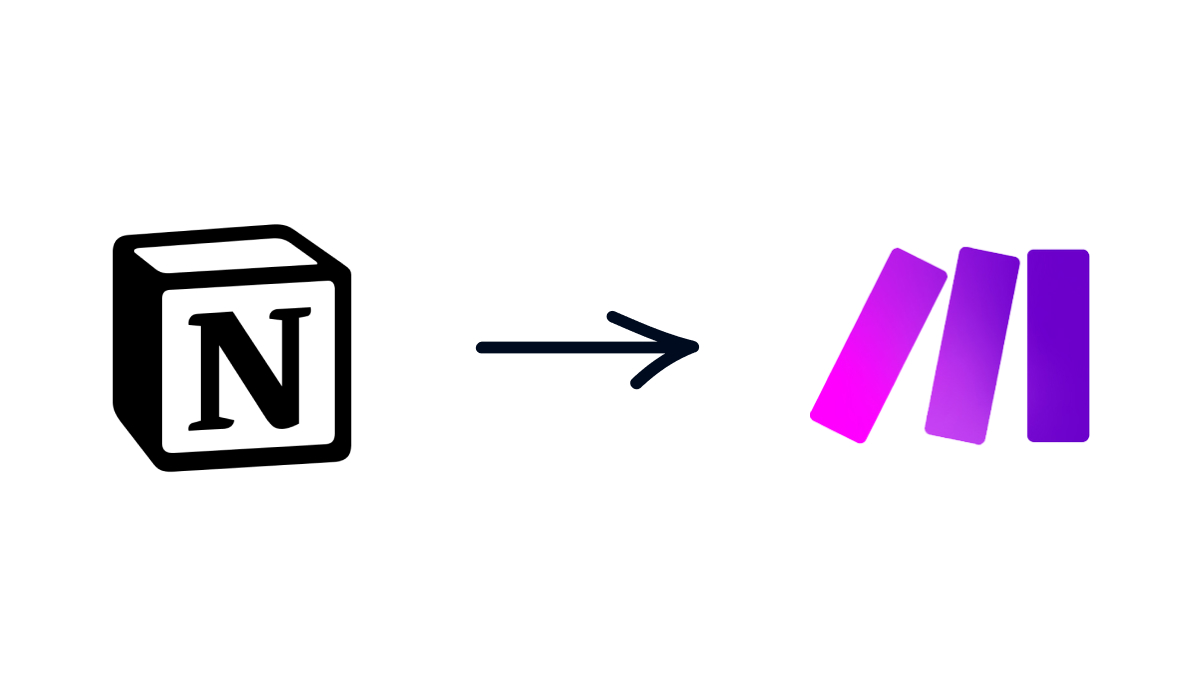
No-code automations should fit seamlessly into your workflows, letting you accomplish more without having to drastically change your setup.
With a platform like Make (formerly known as Integromat), you can build automations with tools like Notion that you use for everyday work.
In this post, we’ll show you how you can trigger Make automations whenever you add a new page in Notion, update a database, or add content to a page. And once you have your automations set up, you’ll be able to trigger them by just using Notion as you normally would.
Watch databases or pages
First, let’s take a look at the “Watch databases/pages” module. Like all of the modules we’ll cover in this post, this is a trigger module, so you can use it to launch your scenario in Make.com or Integromat.
Using it will make your scenario run whenever a new page or database is either created or updated in Notion.
Configuring the “Watch databases/pages” module
You can choose whether it will run for databases or pages, but the module itself doesn’t let you distinguish between updates and new items. But don’t worry - we’ll also show you how you can handle that with a filter instead.
To set up the module, just choose whether you want to watch databases or pages, and enter an optional query if you’d like. The “query” field is just a simple keyword search, and won’t be as useful as adding a filter after the trigger.
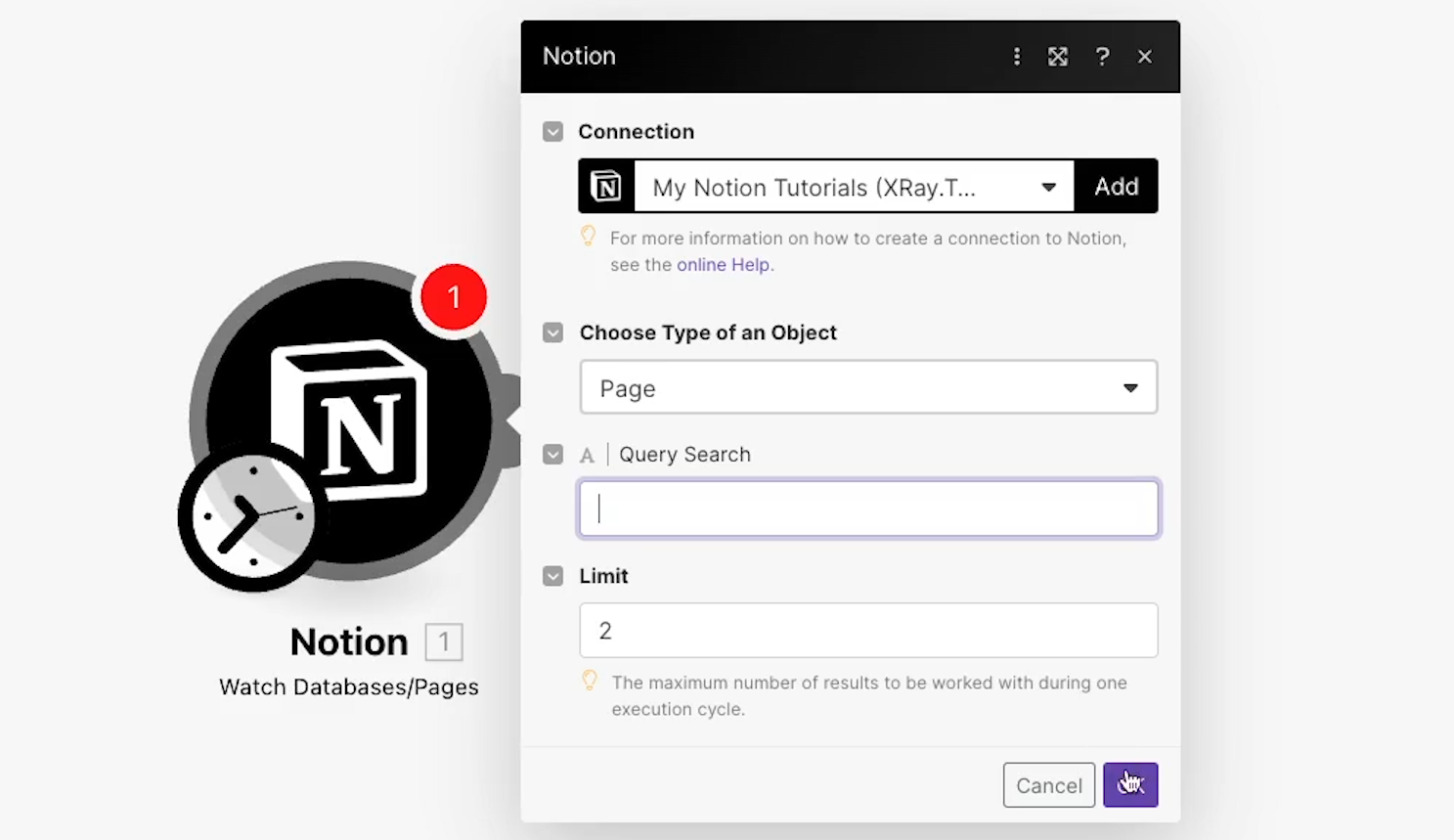
Then, set the item limit, and run the scenario once to grab some data. It will search through all of your databases or pages, so it may take a few moments.
Now, you can use the data it retrieves in future steps in the scenario. In our example, we’ll send a Slack message with the name of the page and its URL.
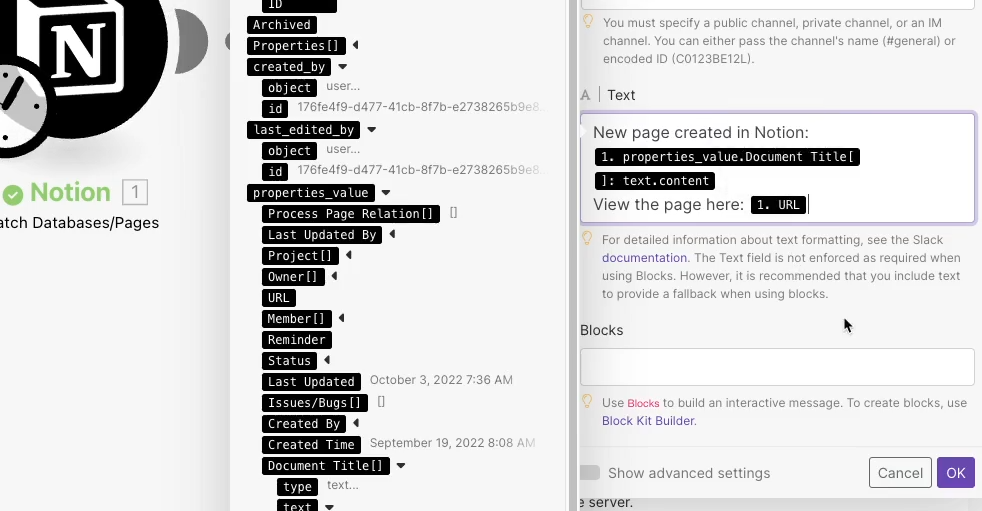
Use filters to control when your scenario runs
If you’d like to narrow the scope of this trigger, add a filter right after the trigger.
If you only want to complete this scenario for new pages, not updated pages, you can just add a condition that the Created Time must be equal to the Last Edited Time.
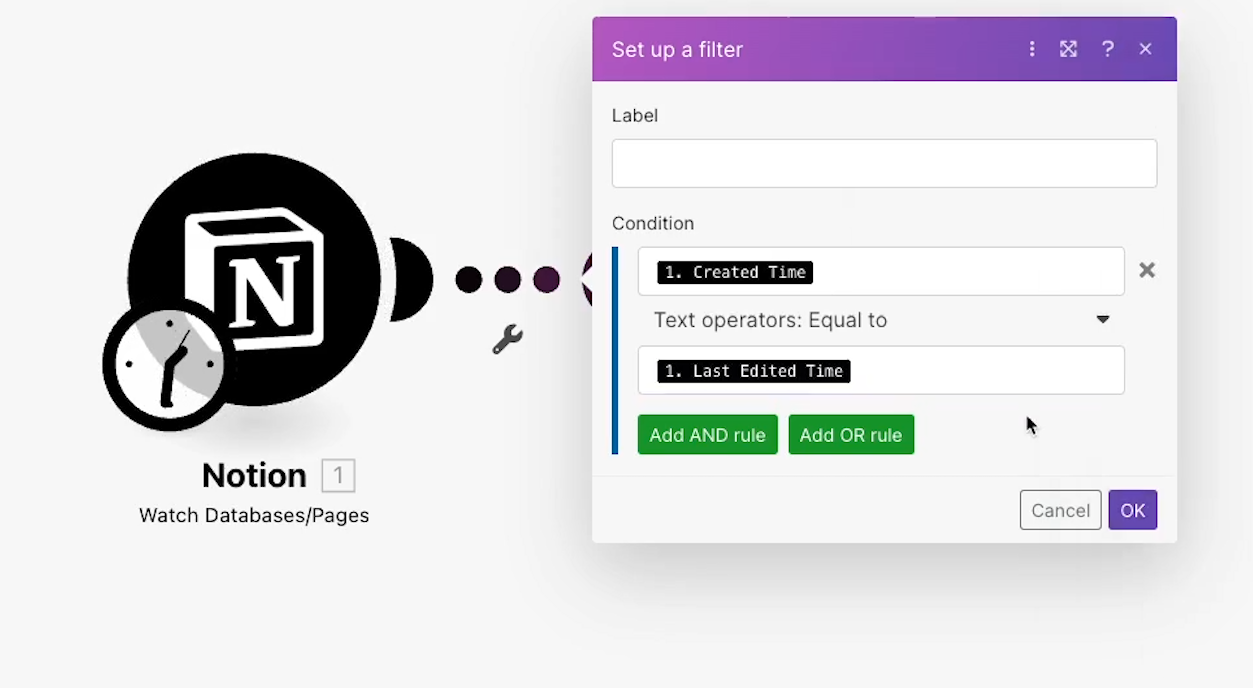
Conversely, you can just swap that to “not equal to” if you want the automation to run for updated pages only.
You can also use filters to grab pages with a certain title, a specific contributor, a particular tag, or any other property that you want to search for.
In our example, we’ll add a condition that the title should contain the text ‘Tutorial Test’.
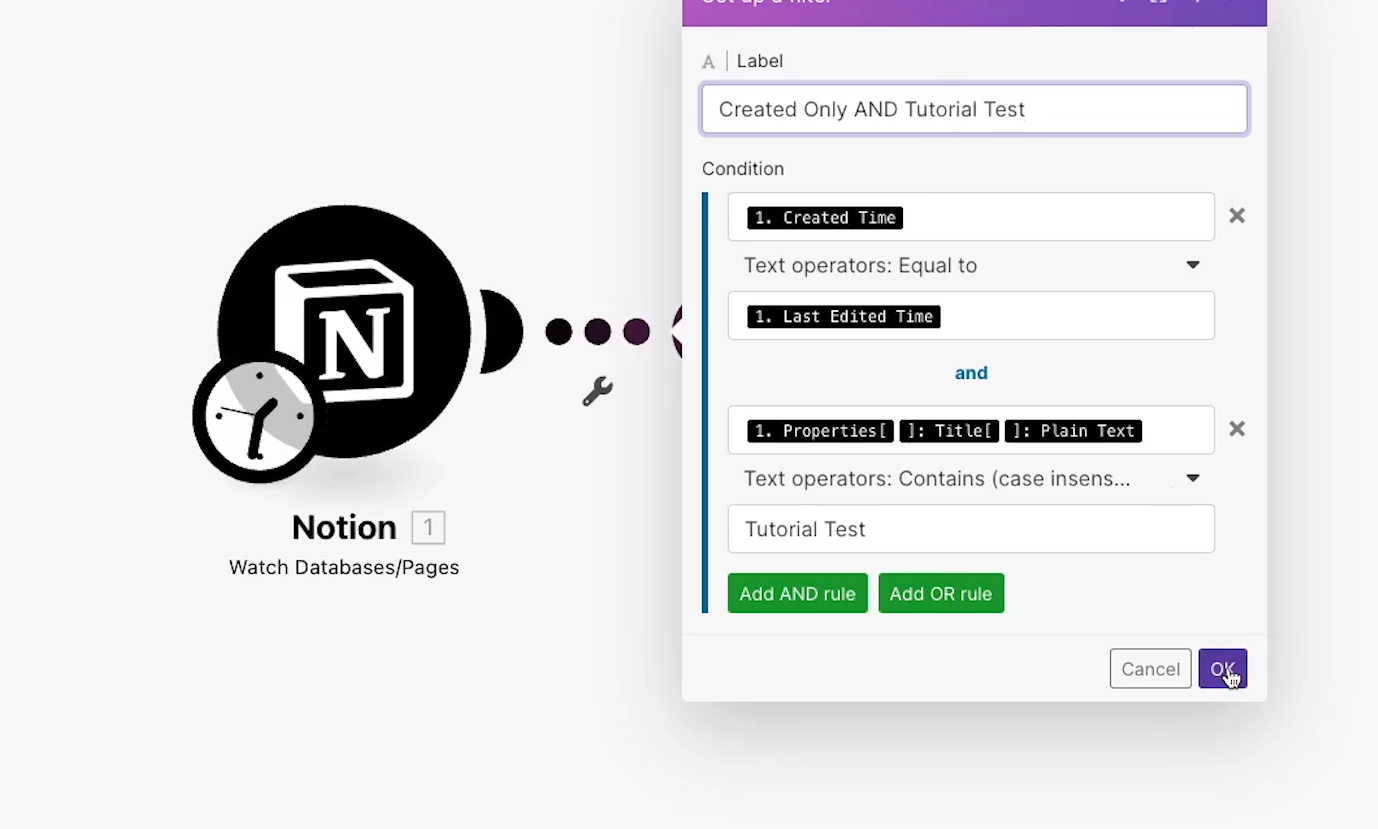
When we turn the scenario on and create a Notion page called “Tutorial Test Page 1”, we see a Slack message appear, showing that the scenario ran correctly.


And when we update the contents, we don’t get a Slack message, since the filter stops the automation from continuing.
Watch database items
Next, let’s go over the “Watch database items” module. With this module, you can trigger your Make automation to run whenever you add or update items in a specified database.
Configuring the “Watch database items” module
First, add a new Notion module, and select “Watch database items”.
Choose whether this module should watch based on created time, or updated time.
If you choose “created”, then this scenario will run whenever you add a new entry to the database. If you choose “updated”, then the scenario will run whenever an entry is updated OR created.

Then, enter the ID of the database you want your scenario to watch.
To find the database ID, open your database in Notion. In the URL bar, your database ID starts after your workspace name and ends right before the question mark. If you’re using an individual account and don’t belong to a group workspace, the ID starts right after Notion.so forward slash.

Paste your ID in, and click OK.
Adding additional steps
Run the module once to grab some test data, and then add another step.
In our example, we’ll just send a Slack message to notify us that a record in the database has been updated, and we’ll include a link to the record in question.

When we turn on and test the scenario, we can see a Slack message appear just as intended.

Note that you can add any actions you’d like here. Make will retrieve a comprehensive list of data about each record that it watches, including all of its properties. You can send that data to Airtable, to Trello, to Basecamp, to Hubspot - any app that’s part of your workflow.
Watch Page Contents
Finally, let’s take a look at the “Watch Page Contents” module. This module will trigger your scenario to run whenever you update the content of a specified page.
Configure the “Watch page contents” module
Add a new Notion module, and select “Watch page contents”. There’s a little quirk in this module that may be updated later, but for now, the “Page ID” field doesn’t actually let you specify the page you want to use by entering its ID.
Instead, you’ll have to pick the title of your page from a list, so make sure that the page you want to use has a unique title.

Then you can set the limit for how many items you want to process each time the automation runs.
Keep in mind that this module is looking for content blocks in Notion. Each paragraph, or each heading will be treated as a separate content block.
So if you keep the default limit of 2, it will only be able to process 2 pieces of content since the last time the automation checked the page. Depending on the workflow you’re building, you may want to raise this limit to make sure that the scenario will process all of the content that you need it to check.
Once you’ve set your item limit, click OK, then run the module to get some test data.
Adding additional steps
Then, you can add any actions you like.
We’ll add a Slack module that sends the text of the content block as a message. This automation will send us a Slack message for every content block that gets added to this page.

If you want the automation to run under more specific conditions, you can add a filter after the trigger.
For instance, we can make it so the automation will only continue if the content that it finds is a heading. In our example, we’ll set a condition that the “Type” property must contain the text “heading”.

Now, we’ll turn the automation on, and we’ll add both an H3 and a paragraph to our test page.
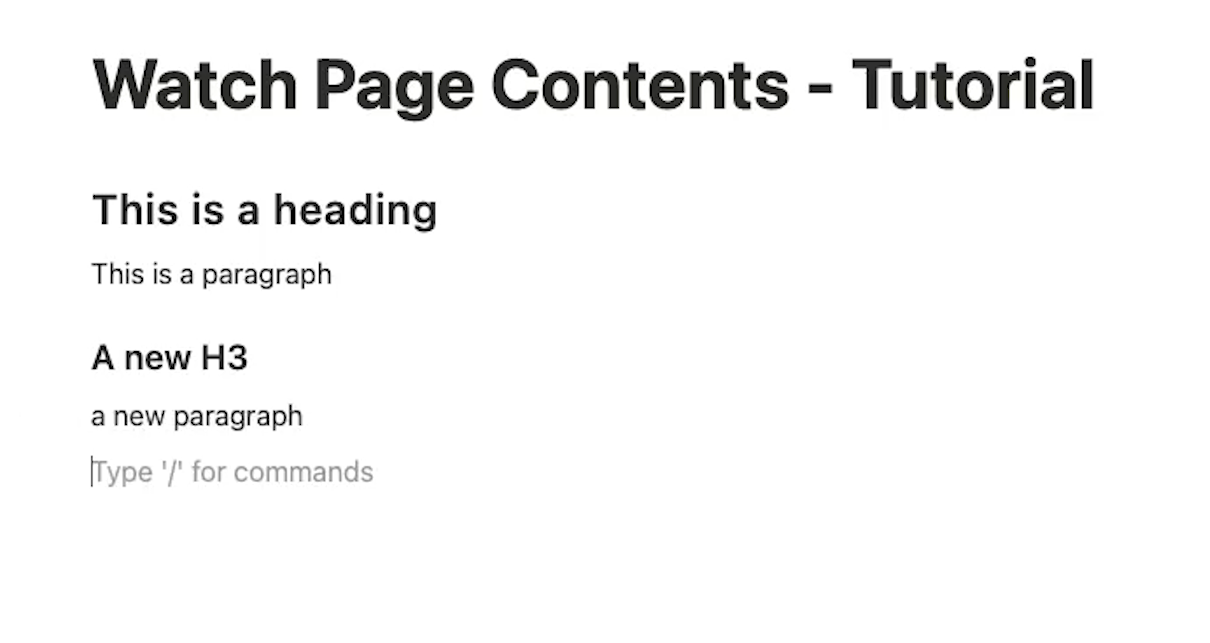
A Slack message appears for the H3, but not for the paragraph, just as we intended.

Automate Notion pages with Make to build seamless workflows
Now you should be all set to start building Make scenarios triggered by your Notion docs and databases. Everything we’ve covered here is just a starting point, of course.
We encourage you to add whatever steps you’d like to build the perfect automation to support your workflows.
If you’d like to learn more about no-code workflow automation, check out our blog or our YouTube channel. You can also follow XRay on Twitter, Facebook, or LinkedIn.





